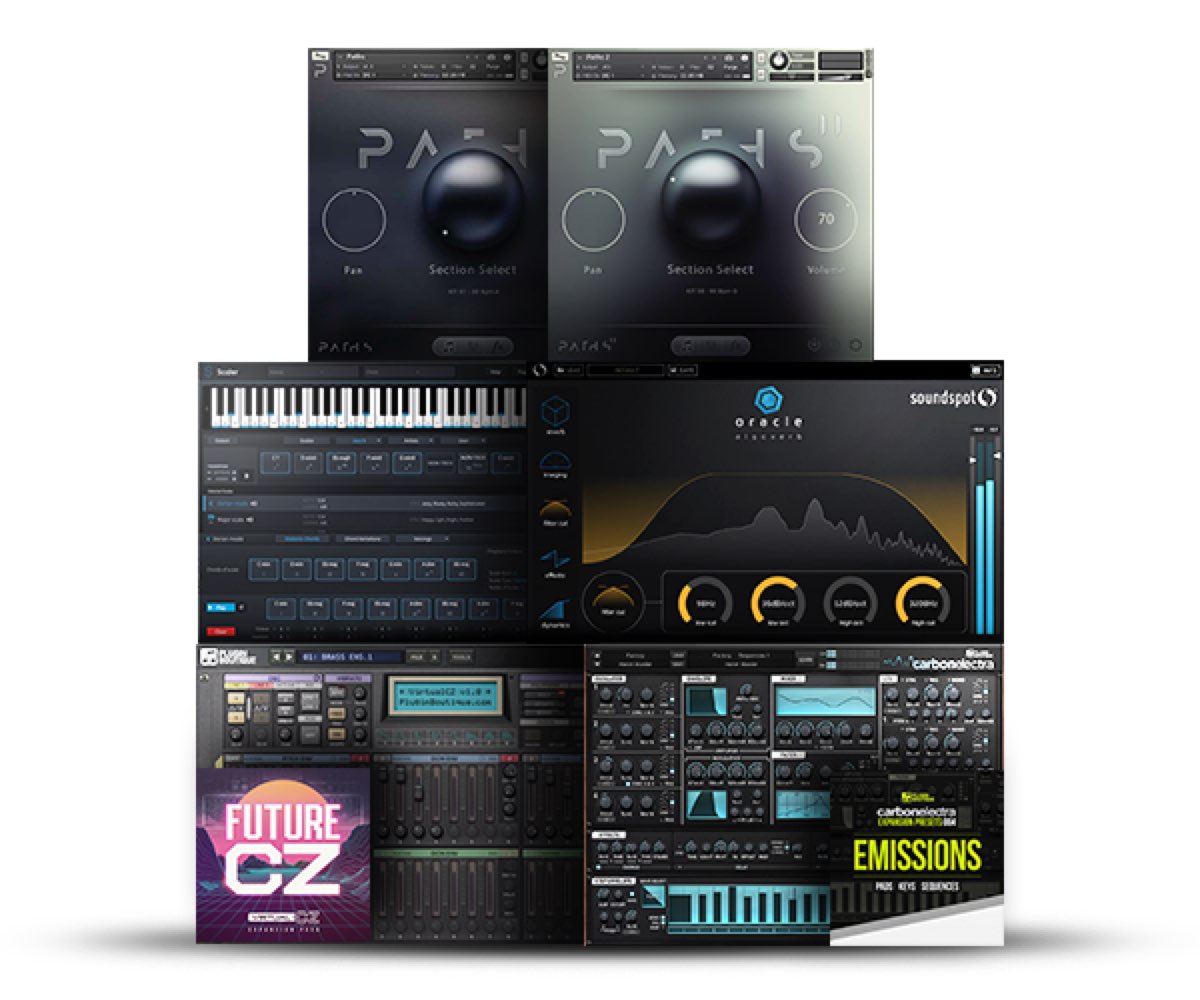“Cut-Up” Cutting up audio to create new phrases
Tips and efficient cut-up techniques

By “cutting-up” existing audio files,
you can rearrange and deconstruct rhythms to create new ones.
- Sample Audio
We will take a look at using a sampler to easily create cut-up audio phrases,
and some tips to create variety and complexity in it.
Generally for cutting up audio, the audio track is cut into pieces,
and rearranged manually, but this can be rather time consuming.
Therefore, by inputting the cut-up audio into a sampler and sequencing it with MIDI,
we can speed up and simplify this process.
We will use Cubase’s “Groove Agent SE” for this tutorial,
but most samplers come with similar functions.

First we will cut up the audio materials.
When doing this, cut the audio to a good subdivision in contrast to the track tempo.
Because this song is 180BPM, we will cut up in 8th note subdivisions.

Next, we will input the cut materials into the sampler.
For Groove Agent, by selecting all the materials and drag/dropping into C1,
it will automatically be distributed into separate pads.
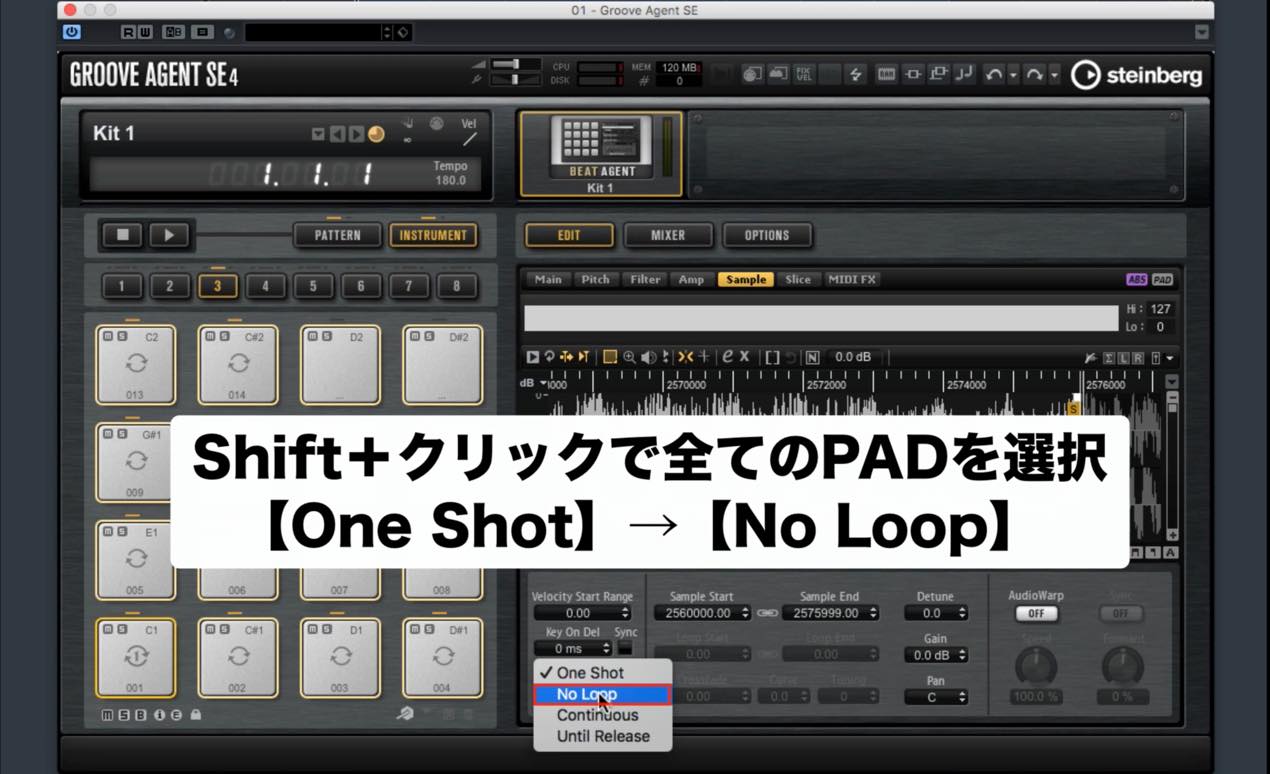
Next we will set the MIDI note’s attack/release.
In Groove Agent, select all pads and select “No Loop”.
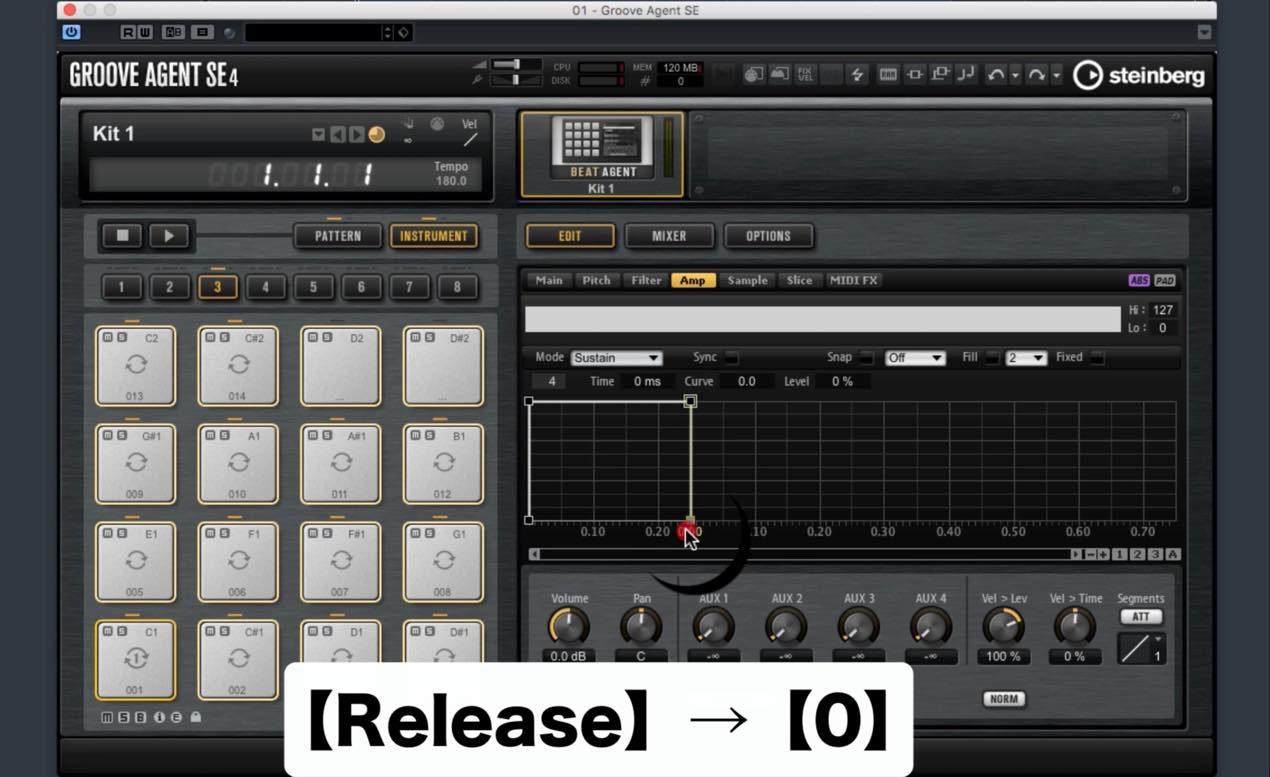
Because we want to keep the note ending short, we will select all the pads and set the “Release” to 0.
Lets try sequencing some audio.
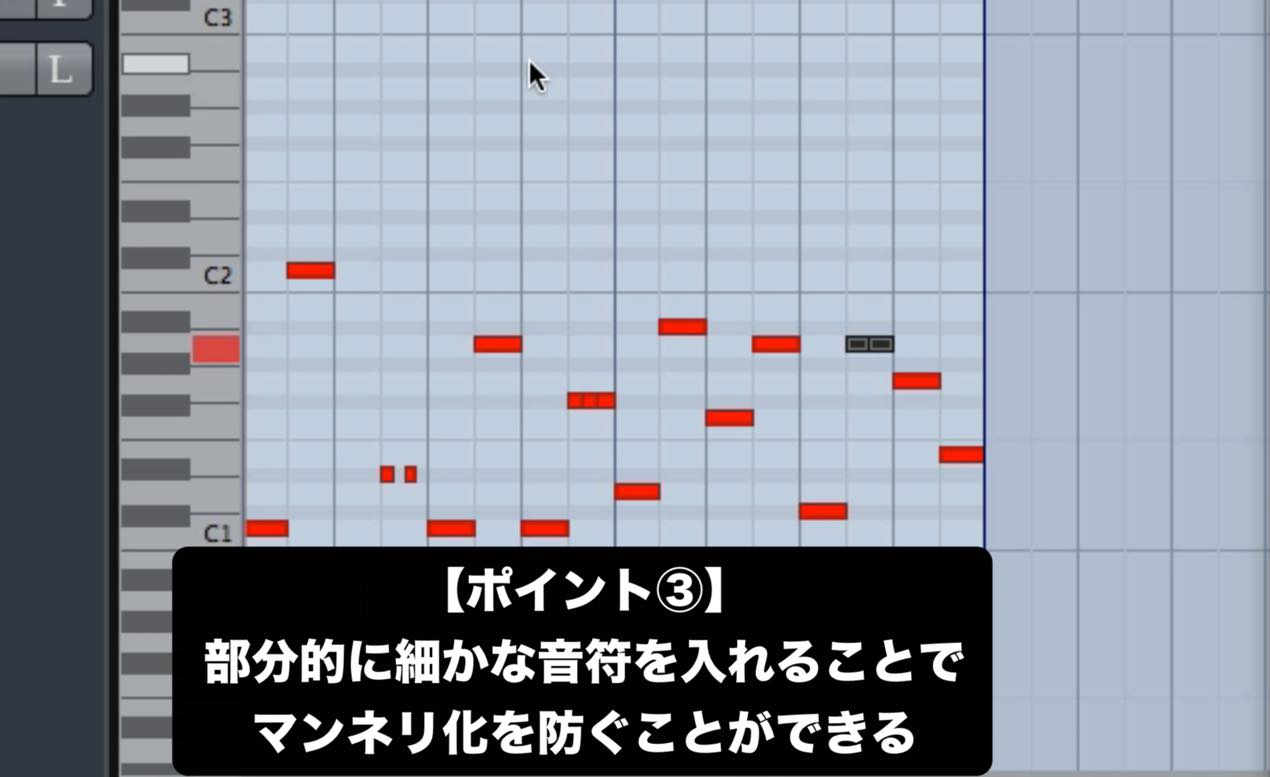
A tip for sequencing, is to add in open/blank spaces,
and add in 16th and triplet notes to avoid creating phrases that sound too repetitive.
By doing so, you can create stutter like effects as well.
We have created a rather convincing phrase at this point, but by utilizing a sampler,
we can add more variation and complexity to our phrase.
1. Randomizing panning of individual pads

Select pads individually, to randomize or change their panning.
This is a useful effect made simpler with a sampler.
The panning can be set to flow with the phrasing as well.
2. Adding in cut-up audio with changes in pitch
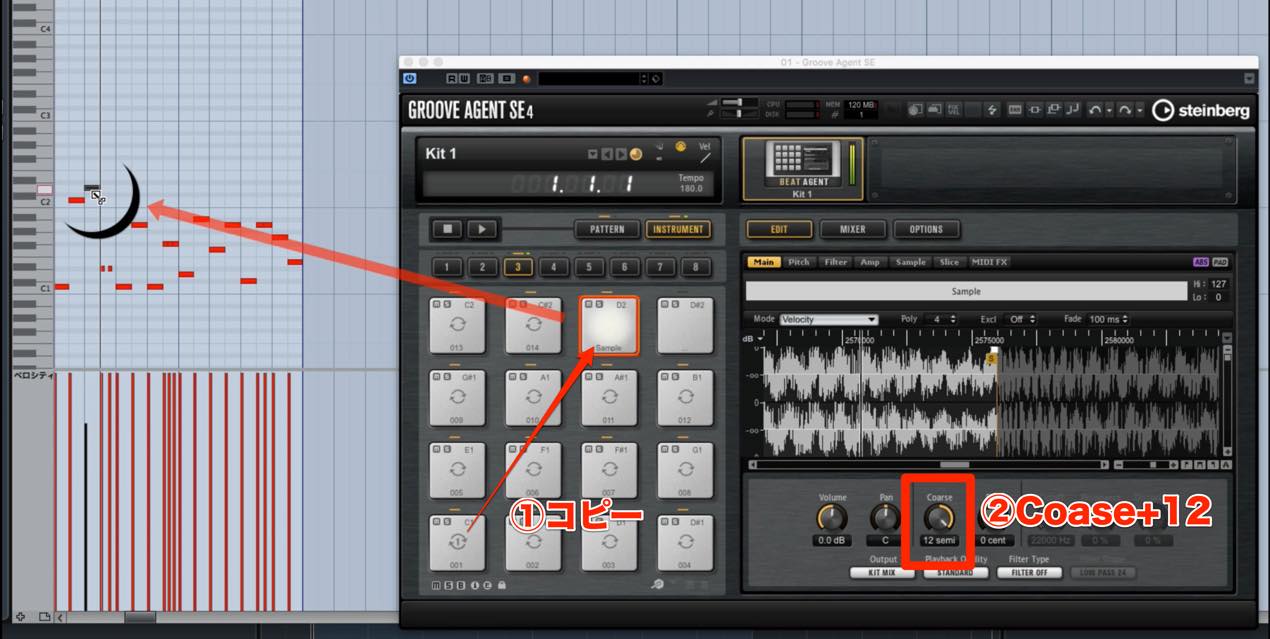
Copy a pad sound into an open pad slot, and try pitching it differently.
An octave is particularly easy to include and makes for a good effect.
3. Randomizing filters of individual pads

Using filters is an effective way of adding variation as well.
Place it on select pads rather than all of them to create variation.
Try experimenting with resonance and different filter types as well.
4. Utilizing reverse functions

We recommend keeping the original sample shorter if using reverb.
Have one select pad to use for it, and utilize the sampler’s reverse function.
Use it as a subtle effect at certain points in the phrase.
As shown, by using a sampler you can easily and effectively create more complicated phrases.
Please give it a try!







